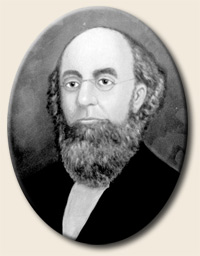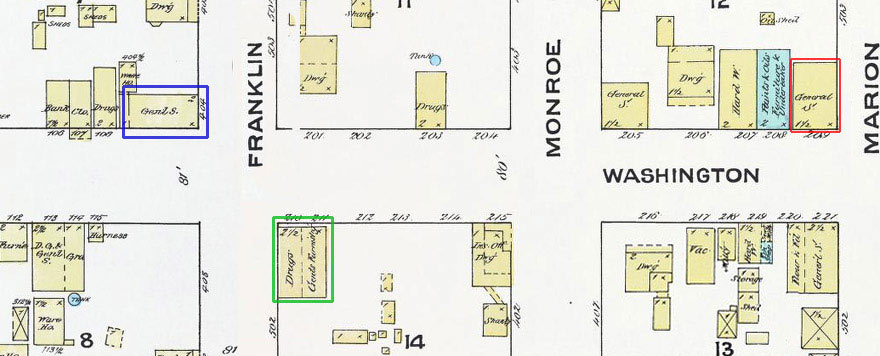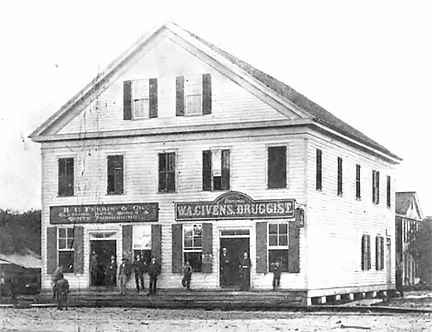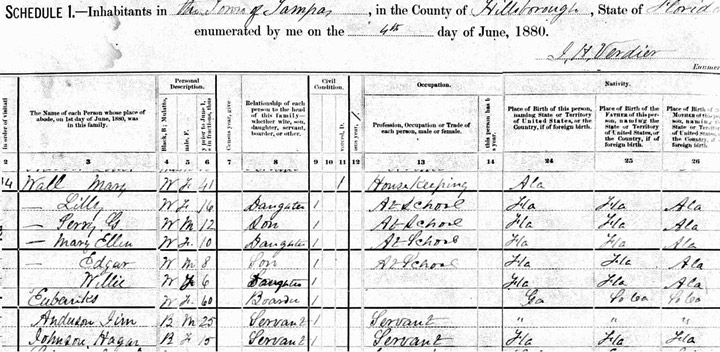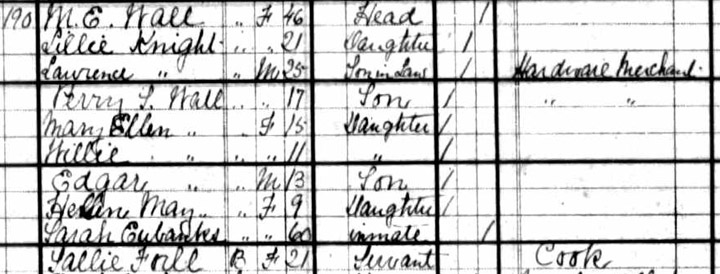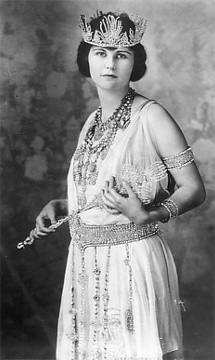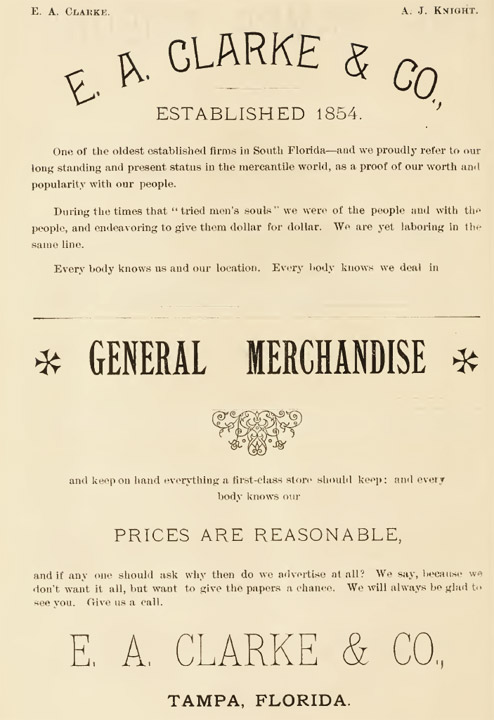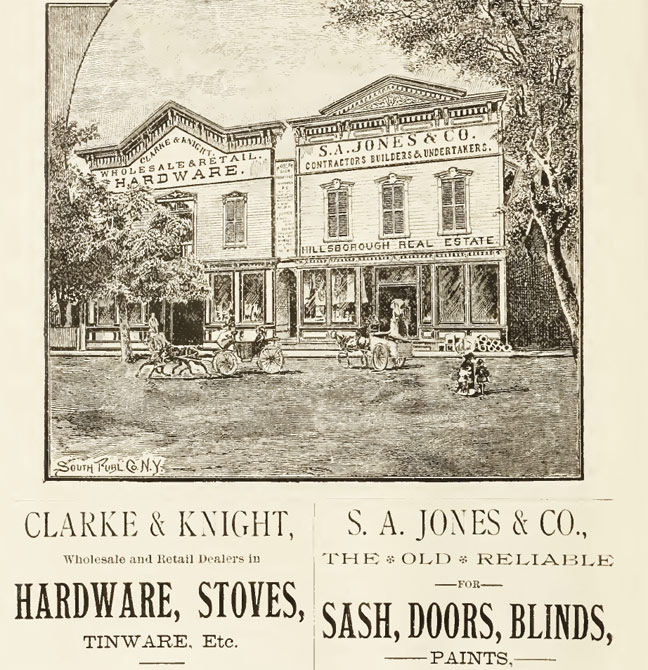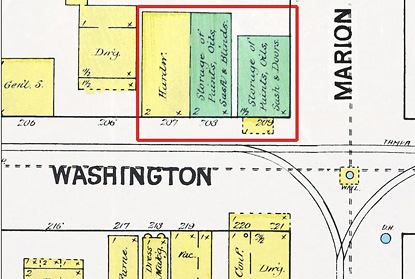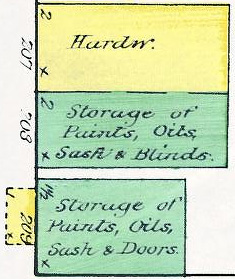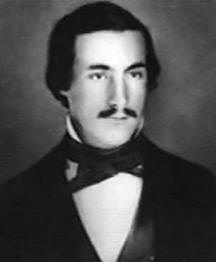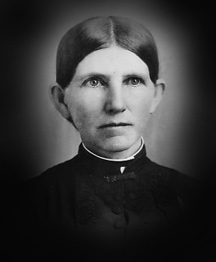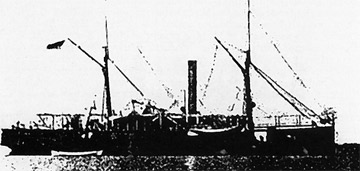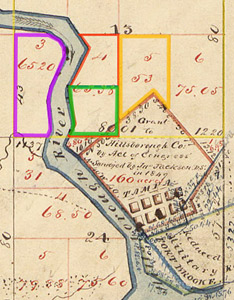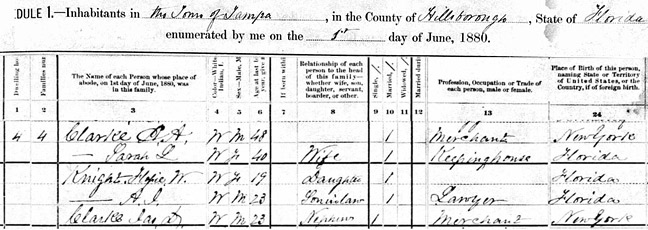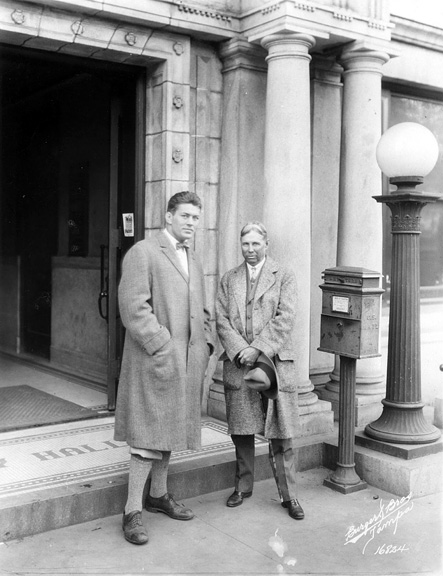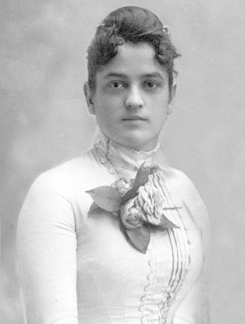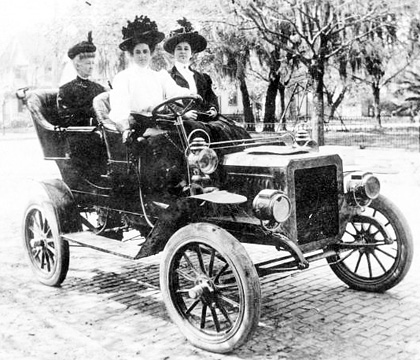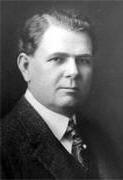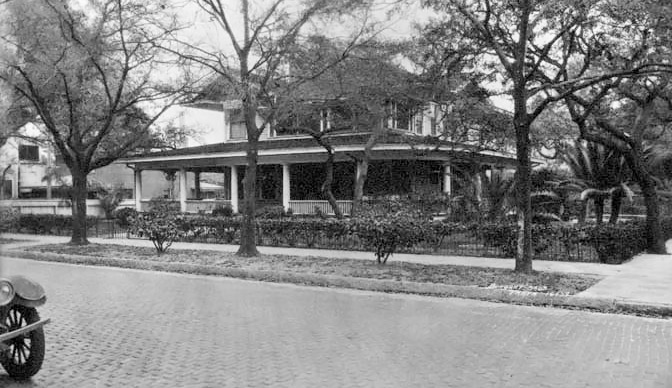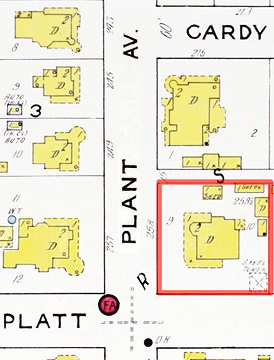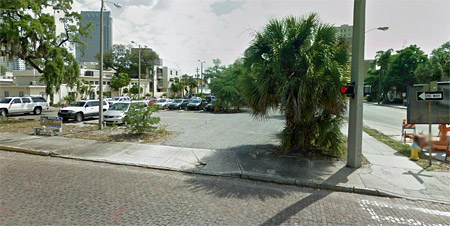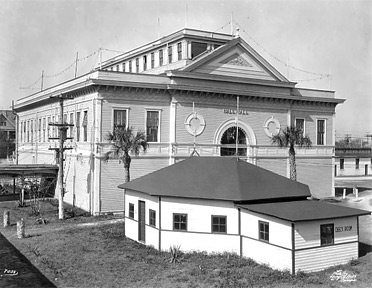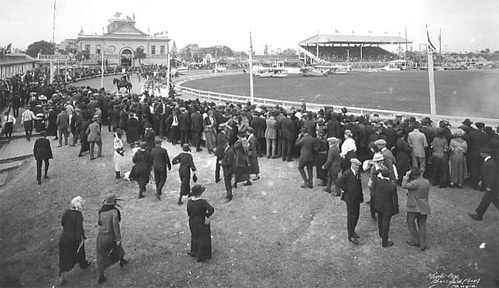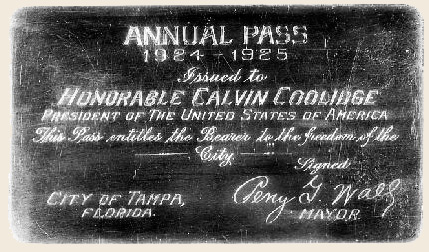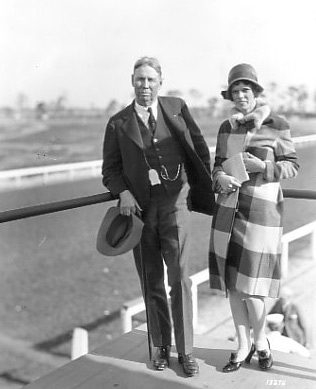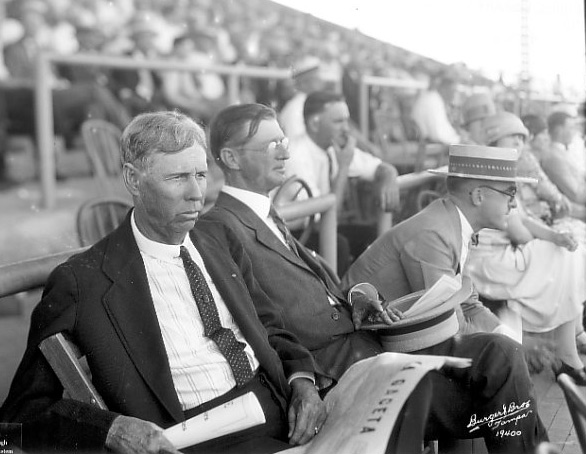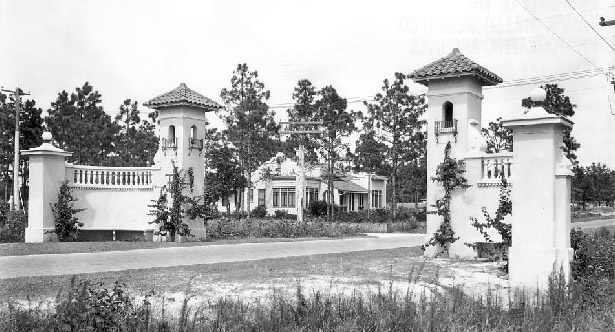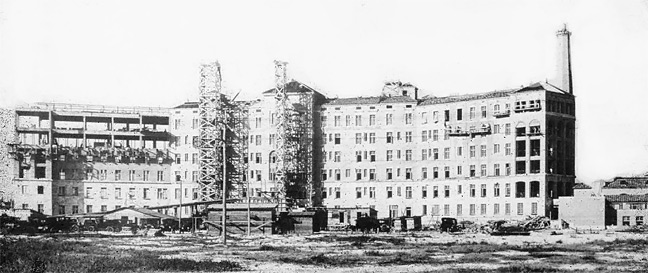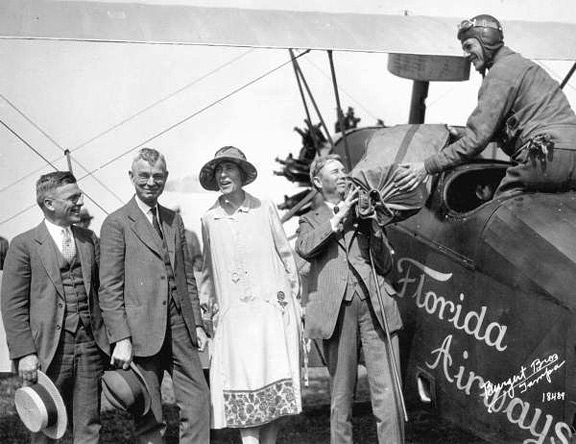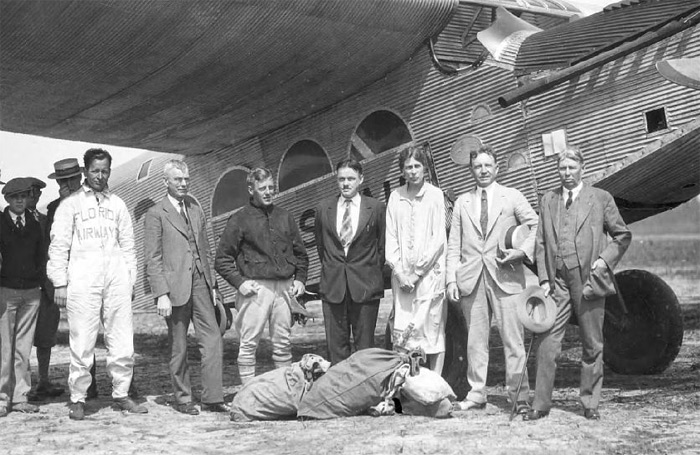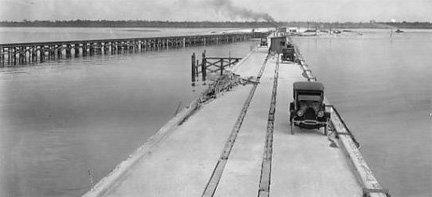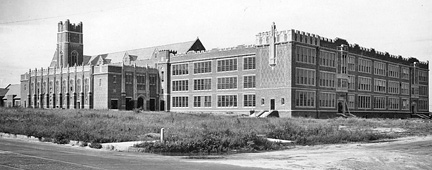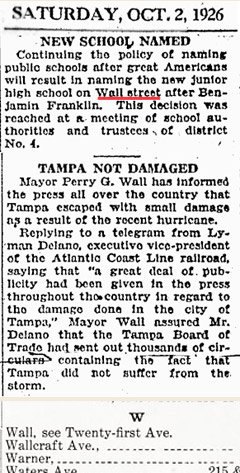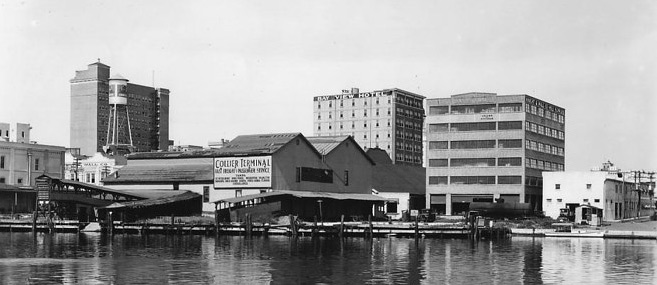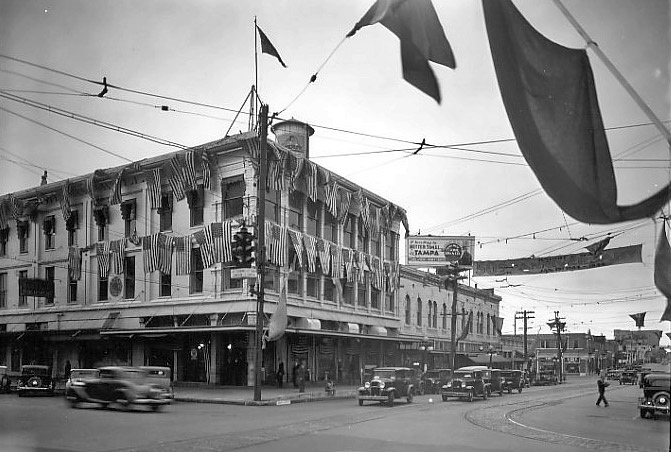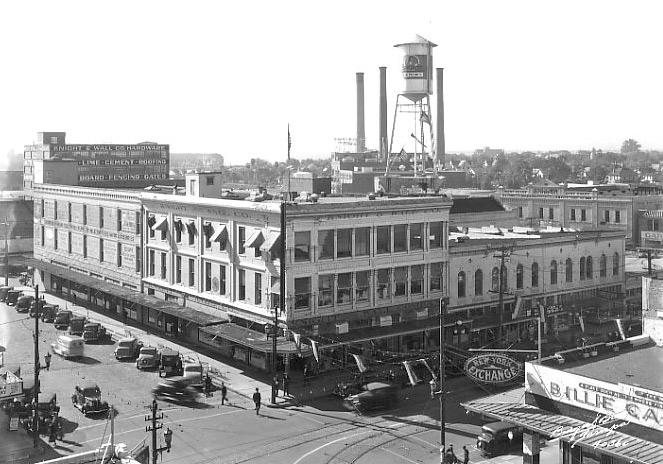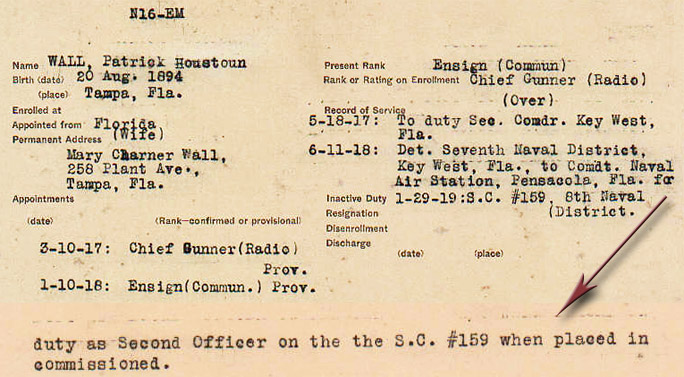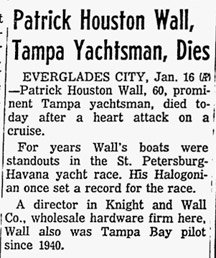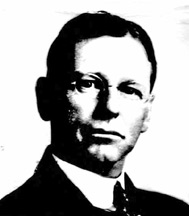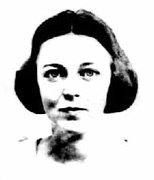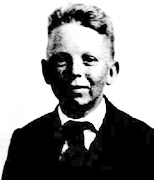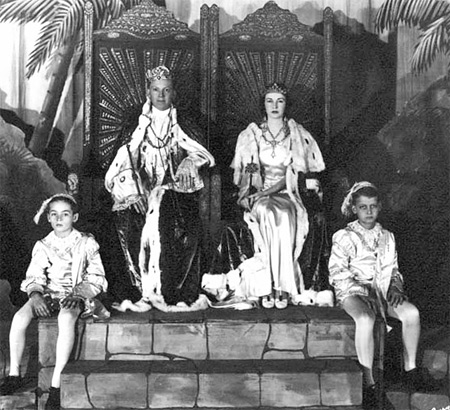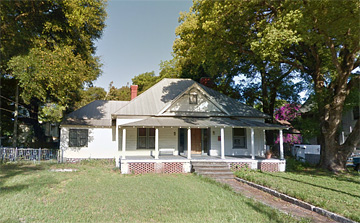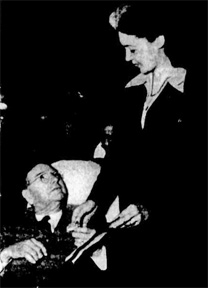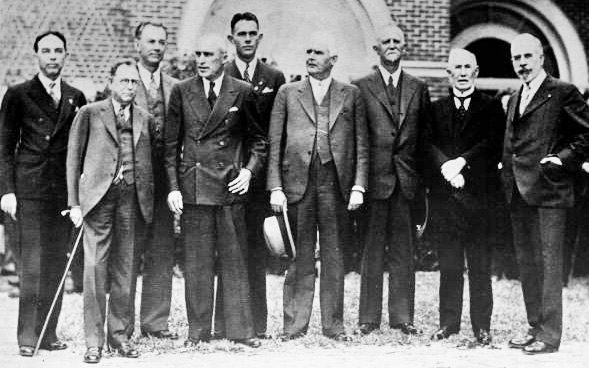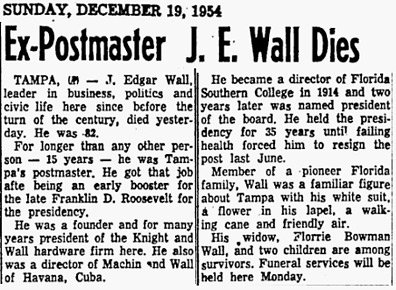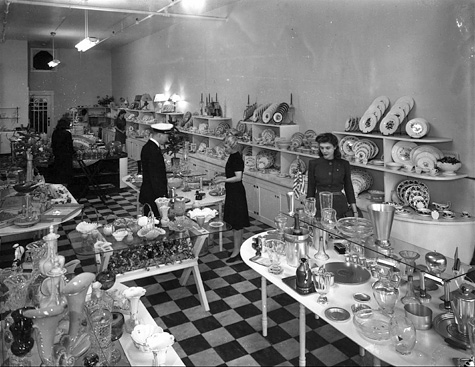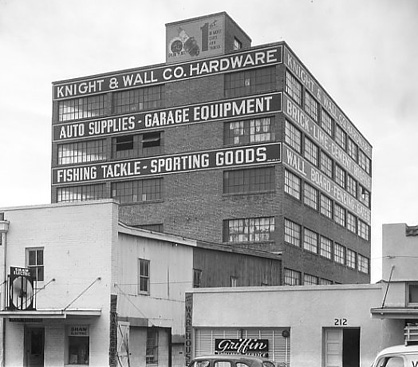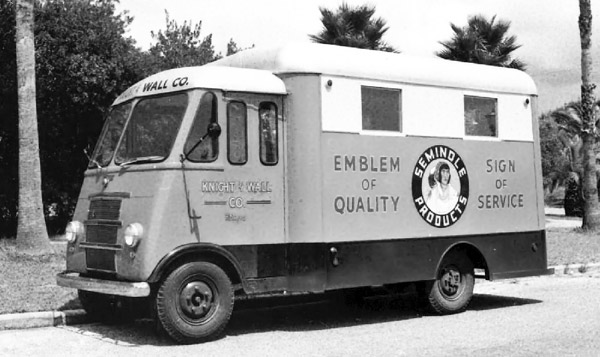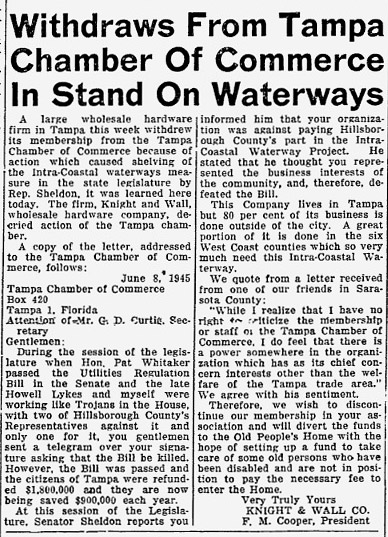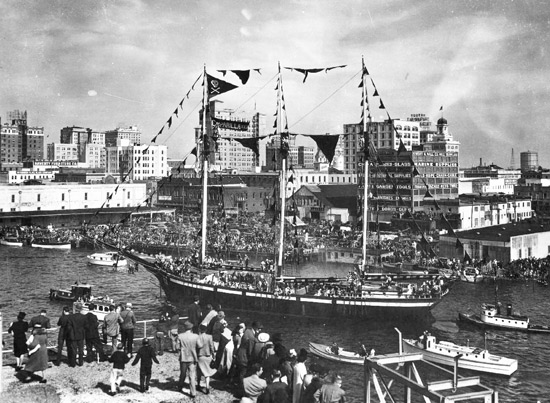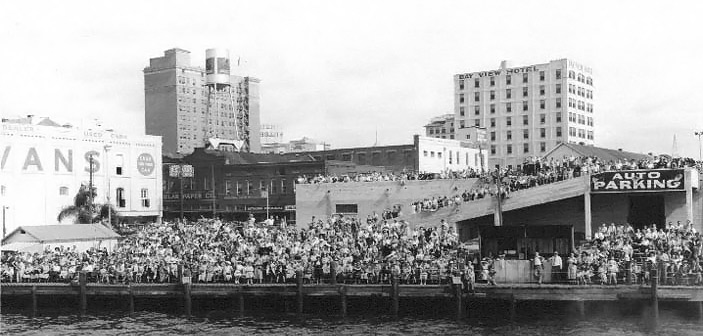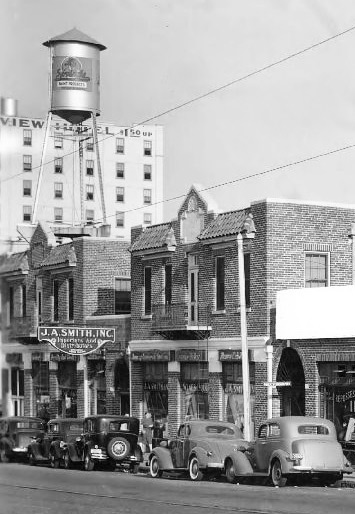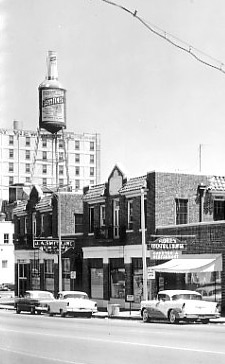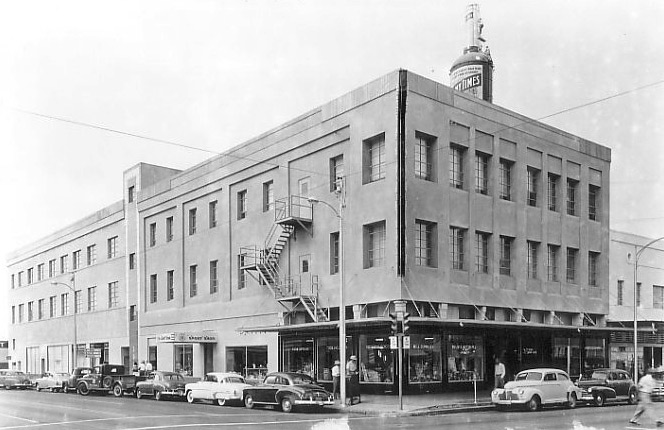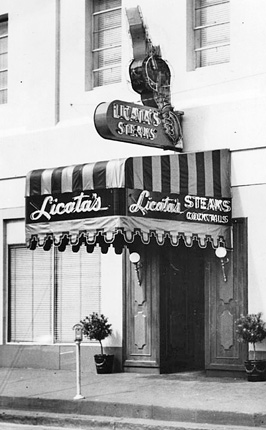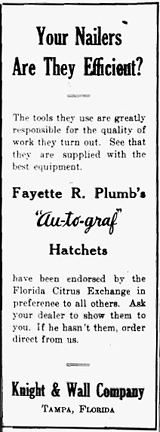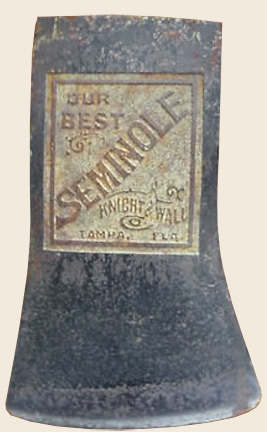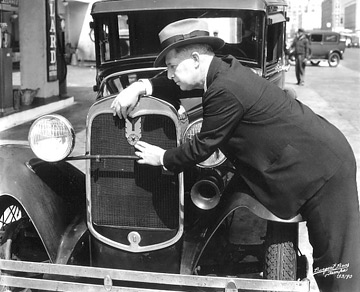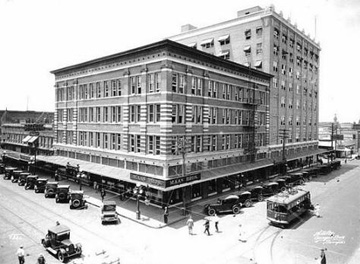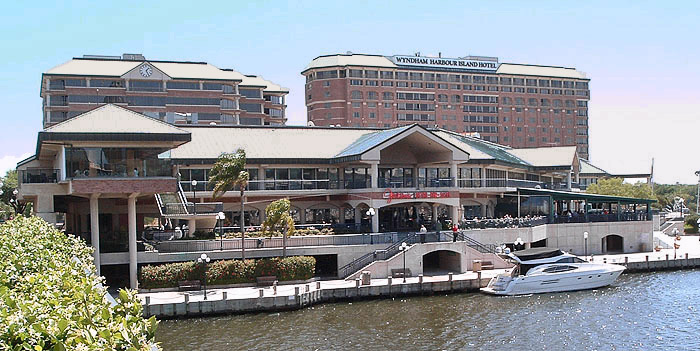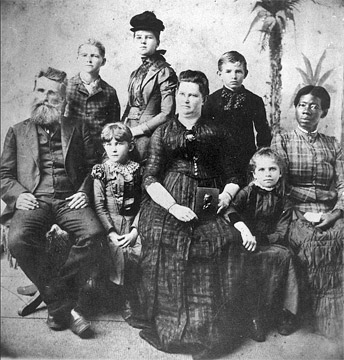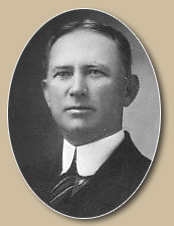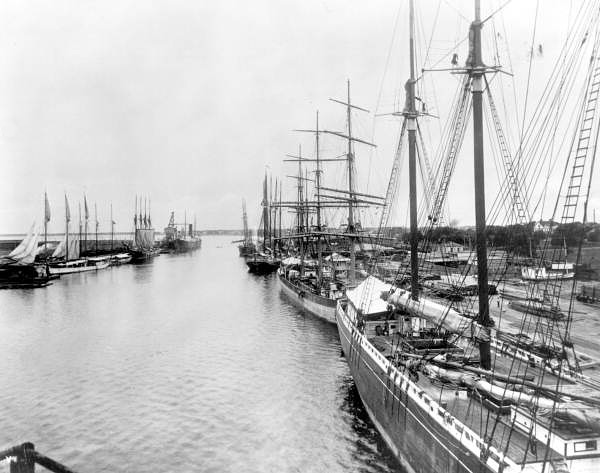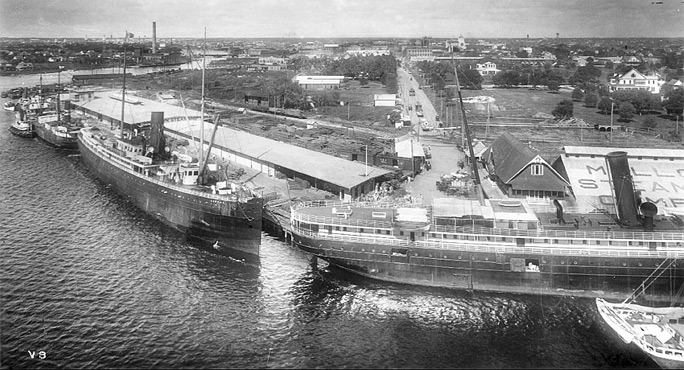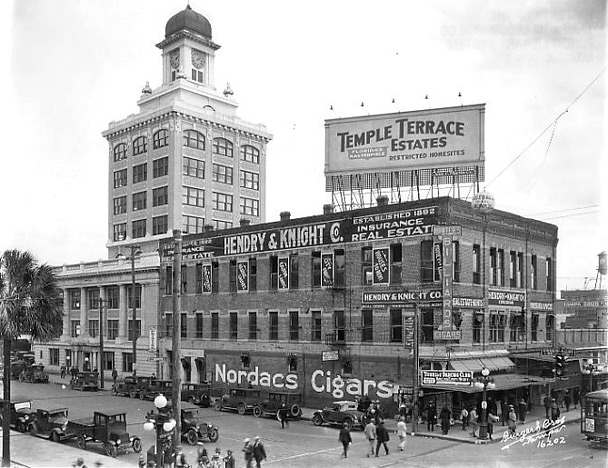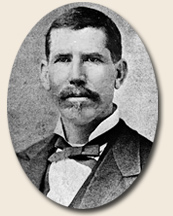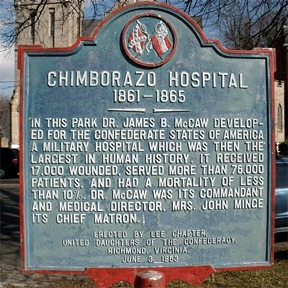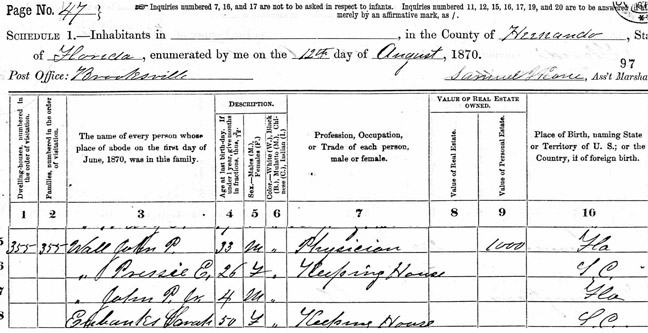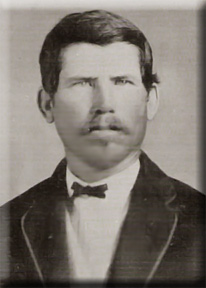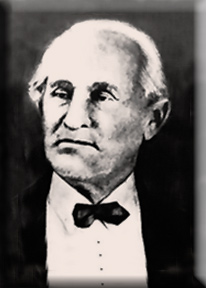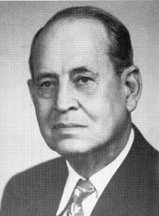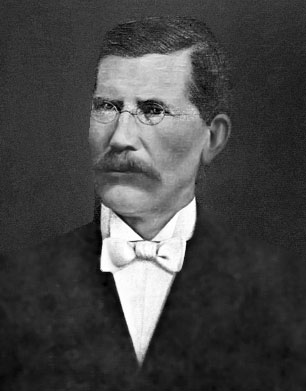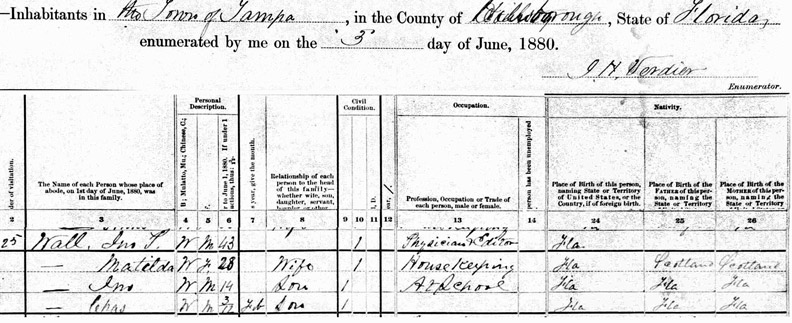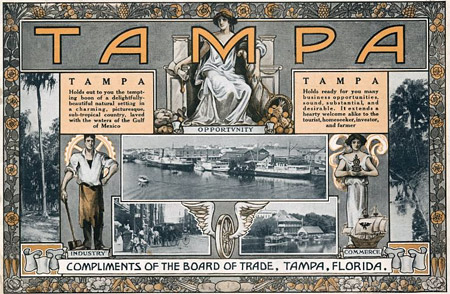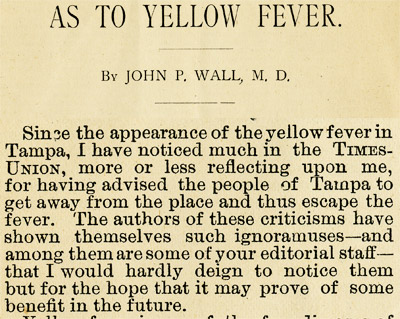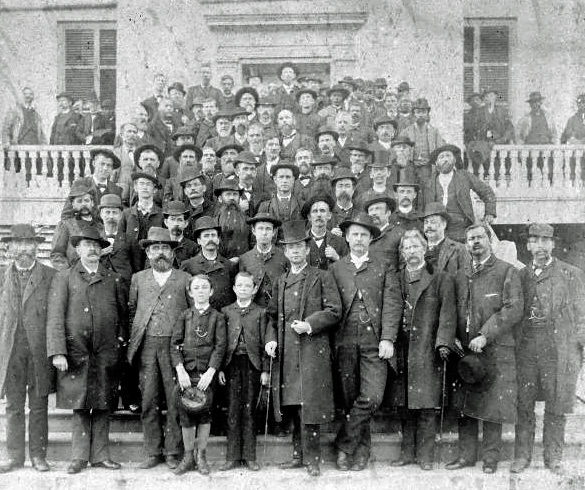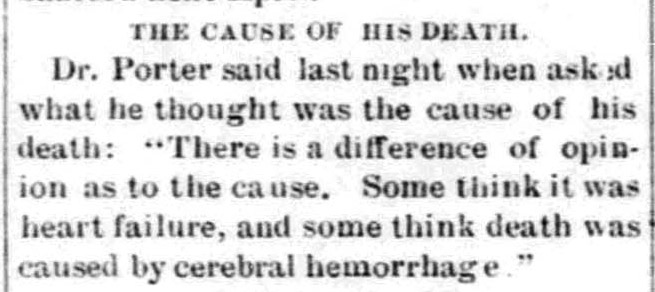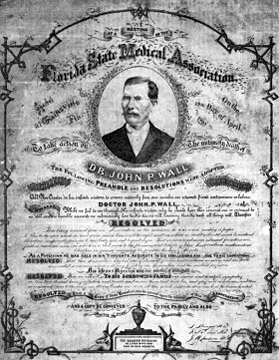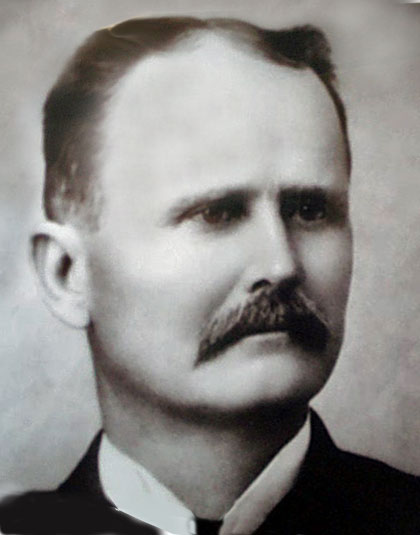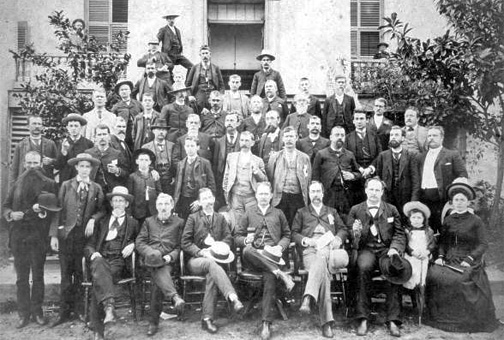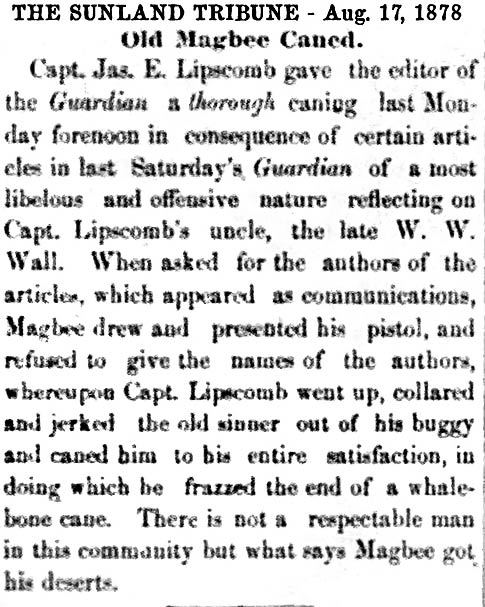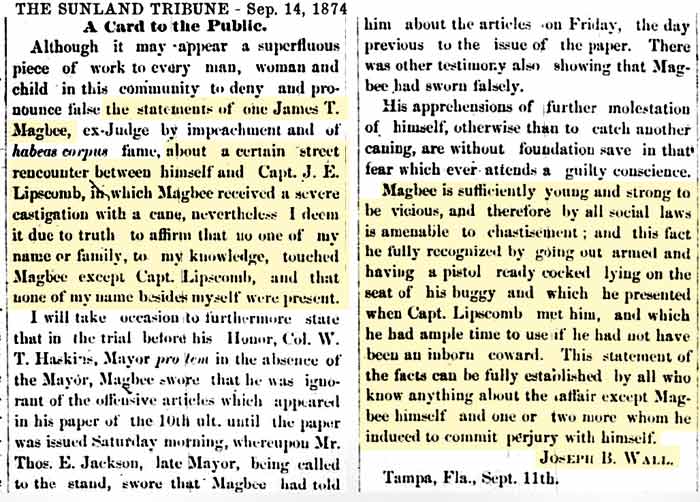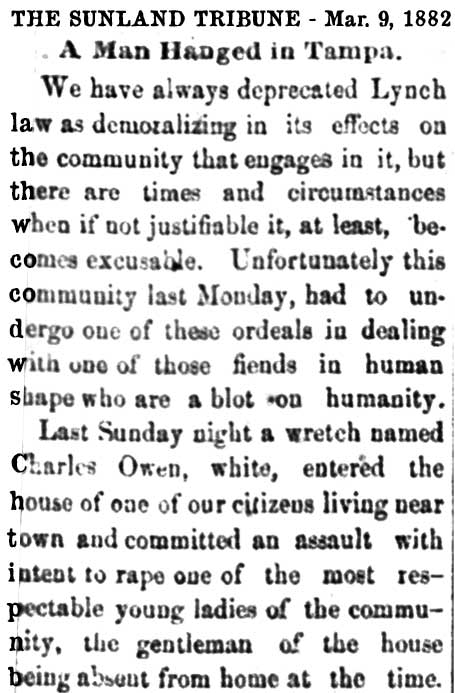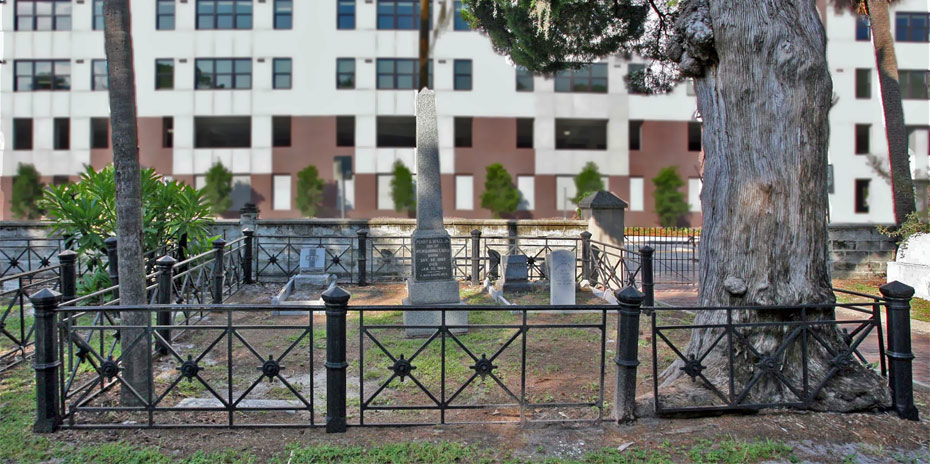|
ORIGINAL 1935 Knight & Wall Letterhead
|
|
||
|
|
Perry G. Wall, II, was born to a distinguished Florida pioneer family on Nov. 22, 1867 near Brooksville in Hernando County. Perry's father was William Washington "Billy" Wall, a son of Judge Perry Green Wall and his first wife Nancy Hunter. Perry attended the East Florida Seminary in Gainesville, Florida, and Bingham Military School in Asheville, North Carolina. In 1884 he established a hardware business at Washington and Marion Streets in Tampa with his brother-in-law, Henry Laurens Knight. Knight & Wall would become one of Tampa's most prominent and enduring businesses, lasting for nearly 80 years. They became the largest hardware establishment in Florida, with extensive retail and wholesale business covering all of south Florida and a related branch doing business in Cuba.
|
|
Knight & Wall ad
in Rinaldi's Guide Book of Tampa, 1920
|
|
|
Knight and Wall Company's multi-story brick building with embellished front and sides, at the southwest corner of Lafayette Street (100 block) and Tampa Street, 1922. Notice the American flag sign made from light bulbs, and the K & W water tank on the roof. Today, this location is 101 E. Kennedy, the 42-story Bank of America building, originally built as the Barnett Tower. Completed in 1986, at 577 feet tall, it surpassed One Tampa City Center as the tallest building in Tampa, until completion of 100 North Tampa in 1992. Burgert Bros. collection at the Tampa-Hillsborough County Public Library
Place your cursor on the photo to see this location today.
|
|
|
|
The Rinaldi Guide Book
to the City of Tampa, 1920. |
|
Rinaldi Printing
Company and Knight & Wall stores, Knight & Wall building, 111 Lafayette
St., 1924 |
|
The Knight & Wall building at Tampa St. and Lafayette in 1926 with a streetcar passing by on Lafayette. |
|
|
Burgert Bros. collection at the Tampa-Hillsborough County Public Library |
|
Evolution of This Intersection
|
|
|
|
|
|
1889 - Wood structures; a 2-story saloon and a restaurant occupied this property. The blue circle is a wooden water tank. Knight & Wall was still located at it's original location at Washington and Marion Streets. |
1892 - A brick 2 and 3-story structure has replaced the saloon and restaurant. Notice the "x" inside the small square of the 3-story building, marking a spire topped cupola at upper right. Only offices occupy the 2nd floor of the 2-story building, possibly Knight & Wall. A brick water tank has replaced the wooden one. |
|
|
|
|
1892 - The 3-story Knight & Wall building with steeple at top of this photo. In the foreground on the right is Branch's Opera House on Franklin Street, with Tibbetts Corner at the left of the photo. Burgert Bros collection at the University of South Florida Digital Collections Place your cursor on the image to see this from a different angle.
Read more about Tibbetts Corner at Tampapix |
1895 - The 3-story part of the building now houses Knight & Wall's hardware, moving to the left, clothing, communication and telegraph office, taxidermist, produce, vacant and export office. Below the building, a chicken coop and poultry yard. Rooms, probably for rent, on the 2nd floor. The middle portion of the building now has a wooden awning on Lafayette St. |
|
|
|
|
|
|
|
1899 - The 3-story building houses hardware on the 1st floor and mill construction goods on the 2nd & 3rd floors. The spired cupola extends 30 ft. above the roof and the building has an iron front along Lafayette St. Moving to the left, plumbing, vacant, curios, vacant, hand painting, carpenter, Southern Exp. office. South of the building are two chicken houses. At the southwest corner, a ship chandler with a sail loft and two vacant spaces. |
1915 - The entire block is now
completely occupied, with Knight & Wall hardware and mill supplies
along Tampa Street. The spired cupola is gone. Along
Lafayette St., right to left, are: Paint Store, Stove Dept.,
Printing, a shop and two saloons. On the 2nd floor along
Lafayette St. are the Normandie House rooms. The building on
the lower left corner houses a wholesale grocer, a store and a
wholesale confectioner. The long, narrow yellow area is wooden
structure paint storage. In the center is the 30,000 gallon
water tank 86 ft. above ground. |
|
Perry Green Wall, Grandfather of Perry G. Wall, II
Perry Green Wall’s long and productive life began at the "Fork," near the junction of the Ocmulgee and Oconee Rivers in the southern portion of Montgomery County, Georgia. The only child of John Wall, Jr. and Susannah (Whitehurst) Wall, he was born November 2, 1809. Perry’s father soon died and he and his mother lived for a time in the home of her father, Simon Whitehurst.
Later, Susannah married Shadrach Sutton and had six more children. About 1817, the Suttons moved to Irwin County, Georgia, where they are shown on the 1820 census. See the Sutton's 1820 Census
Soon after Perry's twenty-first birthday, he married Nancy Ann Hunter, on November 18, 1830. Her father, William Marion Hunter, was a prominent settler who later served as county commissioner and member of the territorial Legislative Council. They lived at present day Jasper, Florida, where in early 1837 Wall purchased four tracts of land near to his stepfather Shadrach Sutton and some of his mother's Whitehurst family members. See the 1830 Census of Hamilton Co. showing the Suttons and Hunters The Perry Wall family settled on a homestead near the site of a Seminole Indian attack, and lived there for nine years. Wall served two enlistments in the Seminole Wars in 1837 and 1838 and then made his first foray into the political arena when he ran unsuccessfully for the post of Clerk of Court, losing to John G. Smith. But two years later, in 1840, Perry ran again, this time unopposed. He was reelected without opposition in 1842 and 1843. He was still clerk in April 1845 but did not seek reelection that October. The last reference to Perry Wall as Clerk of the Circuit Court in Hamilton County is dated October 18, 1845.
Perry Wall was a member
of Concord Baptist Church which he joined in 1835. The church was located
in Tiger Swamp about one and one-half miles south of present-day Highway
41. He was a stockholder in the Union Bank of Florida and was an original
purchaser of a lot in the Town of Jasper, which was incorporated in 1840.
Continued at top of column at right |
When the U. S. Census was taken in Hamilton County in 1840, Perry G. Wall served as an enumerator in the capacity of assistant to the Marshal of the Middle District of the Territory of Florida.
Described as a man of "hardy and cheerful disposition," Perry Green Wall stood out as a respected leader in Hamilton and Benton. He served in numerous elected and appointed offices in these two communities, including deputy marshal, county clerk, and probate judge. During the frequent violent clashes with local Indians in Benton, his home became a hospitable source of refuge for many white settlers
In 1845, lured by generous land grants of the
Armed Occupation
Act of 1842, the family again moved southward to establish and defend a
homestead in the highlands of Hernando County, just north of Brooksville.
Statehood was achieved by Florida that same year, amid continuing Seminole
hostilities.
Perry and his children moved to Spring Hill, Benton County, where Wall made a living as a planter. On December 11, 1845, Perry took a new wife, 35-year old Barbara R. Baisden. She was a daughter of Josiah Baisden.
Benton County
was originally named Hernando County when created a few years earlier, but
renamed Benton County in 1844 for Missouri
Senator Thomas Hart Benton, a
strong supporter of territorial expansion who aided in the county's
creation. Benton fell out of favor with the county's residents later
in the decade due to his decision to support the Missouri Compromise and
the overall reversal of his stance on slavery, and the county's name
reverted to Hernando in 1850.
The 1850 Federal Census of Hernando County shows Perry Wall was a planter.
Wall became Judge of Probate of Benton County in 1848. In 1851, he was defeated for this position, but was re-elected in 1855, and repeated in 1857, 1859 and 1861. |
||||||||||||||||||
Judge Wall's Daughters
An important family alliance was formed in 1848 when Perry’s eldest daughter, Mary Matilda Wall married Aaron Taylor Frierson, a prominent Hernando County planter. Mary was Major Frierson's 3rd wife, by which he had 7 children, with only 3 surviving past infancy: Taylor Frierson who married Annie Dagenhardt, Julia who married James E. Hendry, and Ella who married Louis Hendry, brother of James E. Hendry. In 1852, Judge Wall's daughter Julia Ann Wall became the wife of Tampa merchant Christopher L. Friebele. They had 3 children: Samuel, who married Rosa Dagenhardt, Mary who married first James Eedgar Lipscomb, then Dr. James W. Dupree. Read more about Christopher L. Friebele, "a man of farseeing business sagacity." Julia Wall Friebele attracted only moderate notice in her simultaneous roles as pillar of the Methodist Church and a chain smoker of the finest Havana cigars. Judge Wall's daughter, Sarah Louise Wall, married Edward A. Clarke (see feature about Edward A. Clarke below.) Judge Wall's youngest daughter, Susan Wall, married William Marion Hendry (see feature below.)
Chinsegut Hill, the estate of
Judge Wall’s
family, was built on the highest point just north of Brooksville by Col. Bird
Pearson in 1847 after buying the property from the U.S. government. It was
bought and sold multiple times over the next century. A nearby historical
marker reads, "In 1842, South Carolinian Bird M. Pearson staked a claim on
5,000 acres and called it Tiger Tail Hill, one of the few surviving
plantations in Florida and the one of the oldest houses in Hernando
County. Pearson built the manor house's east wing in 1847 and later
residents expanded it, beginning in 1852. In 1904 Chicago residents
Raymond (1873-1954) and Margaret Drier (1868-1945) Robins purchased the
property and named it Chinsegut Hill, an Inuit word meaning a place where
lost things are found. The house was acquired by USF in 1958 and used as a
meeting center. In the 1960s it began use as a biological experiment
station of the University of South Florida. USF researchers helped to get
the house listed on the National Register of Historic Places in 2003 and
gave up the property in 2009. Photo from State Archives of Florida,
Florida Memory,
http://floridamemory.com/items/show/1102 Perry Wall has been described as a Unionist who opposed secession. Nevertheless, he continued to serve as probate judge of Hernando County after Florida seceded from the Union in January 1861. He was reelected to his final term in the October 1861 elections. From March 29 until May 17, 1862, he served in Capt. J. H. Breaker’s Old Guards, Mounted Rangers, along with son-in-law, Aaron T. Frierson, Samuel Pearce, Francis Ederingron and Malcolm C. Peterson.
|
|||||||||||||||||||
|
William Washington Wall
1870 Census of Brooksville, Hernando Co.
William's real estate was valued at $1,000 and the value of his personal estate was $5,000. This was approximately the same as two of the other four dwellings on this page. William's occupation was retail merchant. Also in his home was his half-brother Charles F. Wall, age 21, who was working as a clerk in the retail storr. The Walls were doing quite well, they had a cook, a seamster and a nurse in their home.
|
|||||||||||||||||||||||||||||||||||||||||||||||||||||||||||||||||||||||||||||||||||||||||||||||||||||||||||||||||||||||||||||||||||||||||||||||||||||||||||||||||||||||||||||||||||||||||||||||||||||||||||||||||||||||||||||||||||||||||||||||||||||||||||||||||||||||||||||||||||||||||||||||||||||||||||||||||||||||||||||||||||||||||||||||||||||||||||
|
The Wall Family Moves to Tampa
Appointment as Hillsborough County Judge
On January 13, 1870, Democratic State Sen. John A. Henderson and Democratic State Rep. Charles Moore of Hillsborough recommended to Gov. Harrison Reed the appointment of "Perry G. Wall, Esq. of Tampa, as a suitable person for the office of County Judge of Hillsborough County." Wall was confirmed by the Senate on January 26 and took office on March 13. The Tampa Florida Peninsular reacted warmly to Wall's appointment:
"Gov. Reed has appointed the Hon. Perry G. Wall, Judge of the County Court for Hillsborough County. This is an excellent appointment and it will, we feel assured, give universal satisfaction. Judge Wall has filled with fidelity many important offices in this State, and whilst he presides as Judge of the County Court he will do so intelligently, impartially and independently." The local Republican County Committee, chaired by Judge James T Magbee, was not pleased with the appointment of Wall. Magbee in early 1870 had been impeached by the House, was awaiting trial and was thus temporarily out of office. He retained influence, but was opposed by other Tampa Republican leaders. Magbee's committee asserted that Wall did not reside in the county and wanted E J. Gould named to the post of county judge. Despite his loyalty to Reed, Magbee's wishes were not honored. Magbee had reason to dislike the Wall family. One of the impeachment charges against him involved his alleged improper purchase and use of goods and supplies obtained from the firm of Ederington and Wall in Brooksville. As county judge, Judge
Wall also served as ex officio probate judge and also as a justice of the
peace. He and his son, Dr. John Wall, had their initiation into the
printing business when Republican C. R. Mobley acquired the Florida
Peninsular in late 1871. Mobley turned it into a Republican newspaper and
hired William P Neeld who in turn retained the Judge and Doctor as
editors. Publication continued only a few months until the paper went bust
in the spring of 1872. William Washington "Billy" Wall Sets Up Shop In Tampa Billy Wall came to Tampa in 1870 and engaged in the mercantile business here, his store standing on the northwest corner of Washington and Marion Streets. In those days, Washington Street was the principal business thoroughfare of the embryo city.
This 1884 map shows the location of Billy Wall's mercantile business outlined in red. Around 1888, Monroe St. was renamed Florida Avenue. On the south side of Washington St., outlined in green, is the building that housed H.C. Ferris & Co. Gent's Furnishings and W.A. Givens drugstore seen below. At the northwest corner of Franklin and Washington, outlined in blue, is the location where Judge Wall's son-in-law, Christopher L. Friebele, set up his general store in the 1850s. Read more about Christopher L. Friebele.
Billy Wall Dies Young
Billy Wall passed away in his prime on April 23, 1878, too soon to see for himself the realization of the visions of prosperity and commercial greatness of his home city. His death, though not sudden and unexpected, was felt throughout the community as a serious loss, as his cooperation with Messrs. Miller & Henderson in supplying Florida's west coast with the facilities of transportation in the way of steamships, was only the beginning of a series of enterprises on the part of the two firms which would have soon advanced Tampa's rapid progress and development. His death was felt as a serious calamity by the entire public. (Sunland Tribune, April 27, 1878)
Judge Perry Green Wall Judge Wall continued in office until April 26, 1873 when he tendered his resignation to Gov. Ossian B. Hart. On March 10, 1873, Judge Wall had received the lucrative appointment of Postmaster at Tampa from President Ulysses S. Grant. He served as postmaster until January 22, 1877 when he was replaced by Robert B. Thomas. Now in retirement, Perry G. Wall suffered the loss of his wife, Barbara, on May 30, 1883. Her body was returned to the old home place at Spring Hill and she was buried in the Lykes Cemetery. Perry did not remain a widower for long and on December 4, 1883, he married Sarah Watlington of Key West, the 47-year old daughter of Francis and Emilene Watlington. Perry and Sarah entered in to a prenuptial agreement prior to the marriage. Perry and Sarah lived at their home in Tampa, occasionally visiting Key West and spending some time at the resort of Rocky Point, on Old Tampa Bay, west of downtown Tampa. At 4 o’clock on the afternoon of July 8, 1897, at the home of his daughter, Julia Ann Wall Friebele, on Franklin Street, Perry Green Wall died, after an illness of several weeks duration. He was 87 years old. His will named his two younger sons, Joseph and Charles, as executors, he having outlived his three oldest sons.
Dr. John Perry Wall John Perry Wall, the second son of Judge Wall, aspired to practice law, but Judge Wall considered medicine more “congenial and profitable," so John went off to the Medical College of South Carolina in 1856, where he graduated in 1858. His father’s wish was dutifully honored, but his son’s subsequent life was to evolve into a curious milieu of medicine, law, journalism and politics. John P. Wall became a successful physician, writer and politician. He was associate editor of the Sunland Tribune, which later became the Tampa Tribune; served as mayor of Tampa from 1878–1880; mapped out many of the routes through the Florida wilderness that are used by the Florida highway system today; and assisted Vicente Martinez Ybor in establishing Ybor City. The circumstances of John Wall's birth foretold that he was to be no ordinary man. John Wall was born while his family was "under siege by the Seminole Indians on September 17, 1836, just south of the St. Mary’s River, near present day Jasper, Florida." His parents, Perry and Nancy Wall, were pioneers, migrating southward by wagon train from Georgia into Territorial Florida during the Second Seminole War. The Wall family settled on a homestead near the site of the attack, and lived there for nine years. In 1845, lured by generous land grants of the Armed Occupation Act of 1842, the family again moved southward to establish and defend a homestead in the highlands of Hernando County, just soutwest of Brooksville. Statehood was achieved by Florida that same year, amid continuing Seminole hostilities.
During the Civil War, John P. Wall volunteered as a surgeon and was assigned to Chimborazo Hospital in Richmond. Dr. Wall’s daily log book of his years as a Confederate surgeon, written in fine, delicate longhand, is preserved in Bradenton by his family. In addition to many medical descriptions, it provides a vivid picture of life in wartime Richmond. It also gives firsthand accounts of the tragic explosion of the Richmond Arsenal and of the construction of the first ironclad warships of the Confederacy. In 1864, chafing under hospital routine and the military discipline of the nearby Surgeon-General, Dr. Wall requested and was assigned duty with troops as a combat soldier. He served initially in the Eighth Florida Battalion near Brooksville and subsequently rose to the rank of major as a member of the Fifth Florida Battalion.
Following the 1865 Confederate surrender, he returned and practiced medicine in Brooksville. Then, in 1871 he moved his family to Tampa, an isolated south Florida cattle-shipping port of 800 inhabitants, where he continued practicing medicine. Like many south Florida towns, Tampa--a steadily growing commercial trade center in its pre-Civil War days--emerged from the war in a very devastated state. It struggled to recover from the damage inflicted upon its central industry, the cattle trade, as well as from wartime seizures and naval blockades. Other barriers hindered its efforts to get back on its feet economically. The most formidable of them were epidemic diseases. Malaria, dengue, and yellow fever regularly plagued the community. During such outbreaks, practically every able-bodied citizen fled and took refuge in a neighboring town or woodland area. Here, in the course of a busy practice in 1871, he boarded the Cedar Key steamer H. M. Cool to treat a cabin boy critically ill with yellow fever. Wall successfully treated the boy for the disease, only to be critically stricken himself by the fever. Pressie stayed by his side and nursed him. But just as he was recovering, it was carried to his family, and within a couple days of each other, both his wife Pressie and their two-year=old daughter, Julia P. Wall, had died of the fever. Following these tragedies, the grief-stricken doctor’s life and career took another sharp turn.
1870 Census, Hernando
Co. John P. Wall was 33, his wife Pressie Eubanks Wall was 26. Their son, John P. Wall, Jr. was age 4. Also in their home was Pressie's mother, Sarah Eubanks, age 50. John's wife Pressie died Sept. 6, 1871 and their daughter Julia, who was born after this census, died on Sept. 8, 1871.
Dr. Wall continued in the medical profession, and was a pioneer in the research and cure for yellow fever. He was among the first to assert that yellow fever was carried by the mosquito. For his conclusions on the mosquito, Wall received nothing but ridicule from the medical profession and especially from the lay press. The sanitarians held sway for more than two decades, and the most widely accepted opinion was that yellow fever would disappear with the elimination of filth. It was not until Carlos Findlay’s proclamation in Cuba in 1881 against the mosquito, and later Walter Reed’s final proof in 1900, that Dr. Wall’s early conclusion was accepted. During this period, Wall, as health officer, had maintained yellow fever in Tampa to a notable minimum by mosquito protection alone.
A "Hell-Raiser" Throughout his adult life, Dr. Wall had suffered one regrettable weakness, a progressive over-indulgence in alcohol. Even by the loose moral code of a frontier town, he was known as "a hard drinker and a hell-raiser." The death of his beloved wife and daughter only increased this problem. Nevertheless, by 1872 he had successfully courted Miss Matilda McKay, the chaste and lovely daughter of Captain James McKay, a prominent shipmaster and exporter. Small wonder that when Dr. Wall approached the venerable Captain, asking for his daughter’s hand, he was met first with stunned silence, then violent refusal. Given quickly to understand that the problem was his alcoholism alone, Dr. Wall swore never again to touch another drop if Miss Matilda would be his. In the face of direst predictions, and weathering provocative tests in which he was surreptitiously offered his favorite poison, Mint Juleps, by his doubting sister, Julia, he rejected alcohol completely. The couple was married, and to the best knowledge of every historian, his oath was never broken. He accomplished a one day cure of alcoholism, a rare and difficult feat in any age. In this forthright decision, Dr. Wall shared in the strong personal characteristics of his entire family. His sister, Julia Wall Friebele attracted only moderate notice in her simultaneous roles as pillar of the Methodist Church and a chain smoker of the finest Havana cigars. Personalities in the Wall clan did not lack for color. See Joseph Baisden Wall, his half-brother. In 1875, Dr. Wall attended the second meeting of the year-old Florida Medical Association, representing the "South Florida Medical Society" and presenting a paper on epidemic disease. An occasional glimpse of Dr. Wall’s ever-present and often acid wit appears in the history of these days. When asked by a relative why he had become an Episcopalian instead of remaining in the Baptist or Methodist church of his family, he dryly replied, "I joined the Episcopal Church because it doesn’t interfere with either my politics or my religion.” During these years the Wall family occupied a house on the half block later occupied by the Tampa Terrace Hotel and the Tampa Federal Savings and Loan Bank. This plot, bounded by present day Kennedy Boulevard, Florida Avenue and Madison Street, contained the home, a large stable, and a separate office building for Dr. Wall. From this office, he carried on a very active private practice for over twenty years, a background easily overlooked among his many accomplishments.
The only surviving child of his first marriage to Pressie Eubanks was John P. Wall, Jr. who grew up in this home, was educated as a lawyer, and practiced all of his life in Tampa. Of the children born to Matilda McKay Wall, only one, Charlie McKay Wall, survived. He was to become one of Tampa’s most colorful citizens and leader of Tampa's gambling underworld. See "The Devil Looks After His Own" at Cigar City Magazine and Tampa in the 1940s at Tampapix. By 1877 Dr. Wall was editor of the new weekly, the Tampa Sunland Tribune, and later became publisher.
From 1878 to 1880, Dr. Wall served as mayor of Tampa, concentrating particularly on increasing the maritime trade of the city. Wall also served as Tampa's health officer. After the city's quarantine station was moved from Ballast Point to Big Grassy Island, Wall successfully lobbied for the construction of a hospital to care for the people stricken with yellow fever. He also established a system of rigid controls for the city's quarantine station. In addition, Wall distributed information to the public and employed preventative measures to control the mosquito population. During his term as mayor, Wall focused on improving the city's infrastructure. In particular, he focused on sanitation and other health-related issues.
His portrait hangs appropriately in the City Hall among the mayors, rather than with his colleagues in the Medical Library.
One of Tampa's most prominent civic leaders, Dr. John P. Wall was one of the founders of the Florida Medical Association. On completion of mayoral term, he founded the Tampa Board of Trade, later the Chamber of Commerce, and became its first president. Here he was a strong leader in Tampa’s three most important commercial developments:
These accomplishments, together with his unending efforts to deepen the ship channel from Tampa to the Gulf, resulted in a marked similarity between the overlapping lives of Dr. Wall and Dr. Abel Baldwin of Jacksonville.
By 1885, Wall had been fighting for the adoption of a state board of health for over ten years. The year 1885 found Wall at the zenith of his multifaceted activities. While many of his suggested reforms remained controversial among Florida’s doctors, Wall’s energetic leadership did merit him widespread respect within the FMA. He was elected to several terms as the organization’s president. Also, Wall launched a career in state politics during this period. By 1885, he had resigned from his duties as Tampa Health Officer and devoted the majority of his time to being president of the FMA and roles in the state government. During this year, he was elected a representative to the state legislature and a delegate to the Florida’s Third Constitutional Convention
At the state constitutional convention of 1885, Wall seized the opportunity to emphasize Florida’s need for a state agency to battle disease outbreaks. At the time, Florida still operated under a system in which each individual county established its own board of health that was responsible for maintaining the safety of citizens against epidemics.
Wall’s fellow convention delegates agreed; the Florida Board of Health was authorized as part of the state’s new 1885 constitution. However, it was not immediately created. Supplying money to finance this new agency was not prioritized by leading state officials. Disappointed, but not discouraged, Wall continued pleading for a state board of health. Events during the years of 1887 and 1888 would finally set the stage for this feat to be accomplished. Instances in which an individual researcher’s breakthrough discovery was ridiculed by his or her contemporaries prior to being generally accepted as fact fill the history of science. The experiences of John P. Wall, a late-nineteenth century medical doctor in Tampa, Florida, offer an excellent example of this recurring scenario in the area of scientific discovery. Most scholarly texts credit Dr. Walter Reed and the members of his 1900 United States Army commission as the first Americans to pinpoint mosquitoes as its principal carriers and transmitters. Florida sources, on the other hand, prove that at least one other American, Dr. John P. Wall, advanced this theory twenty-seven years earlier. Unlike Reed and his co-workers, Wall’s proposal of the mosquito-transmission theory merited him only an inundation of scoffs and criticism from medical contemporaries, who adamantly believed that dirt and filth were responsible for yellow fever’s spread. "They . . . exalt
humbug at the expense of science and truth:"
Death of Matilda McKay Wall In October, 1893, Dr. Wall, by then an authority on yellow fever, was called by the Surgeon-General of the United States to consult in the management of yellow fever at the Maritime Hospital in Brunswick, Georgia. While there, he was summoned home because of the illness of his wife Matilda. He arrived only a few days prior to her death in November, 1893. Six months later he followed his father’s example and took a third wife, marrying Miss Louisa Williams of Virginia in May, 1894. There were no children from this brief marriage.
Death of Dr. John P. Wall At the annual meeting of the Florida Medical Association on April 18,1895, Dr. Wall was invited again to be the guest speaker. The meeting was held in the hall of the East Florida Seminary, forerunner of the University of Florida, at Gainesville, with Wall scheduled to speak at around 9:30 in the morning.
In what would become the most definitive and remembered point of his career, the doctor decided to use this honor as yet another opportunity to speak against what he now whole-heartedly believed was the fallacious "medical" connection between yellow fever and filth.
Wall and a life-long friend, Dr. Sheldon Stringer, took up lodging with adjoining rooms in the on-campus Brown House. The night before the address, Wall and Stringer attended a reception at Odd Fellows Hall, sponsored by the host Alachua Medical Association. Returning to Brown House a little after eleven o’clock, Wall and his friend engaged in a long and lively conversation before finally retiring at midnight.
Wall was described as being in high spirits the morning of his oration. "Cheerful as ever" he rose, ate breakfast, and then walked down to the local office of another close friend, one Dr. Lancaster. The two spent part of the morning visiting several patients. Consequently, Wall arrived a few minutes late to his speaking engagement at the Seminary, where the association’s sessions were being held in the second floor lecture hall.
Upon his entrance, the present order of business was suspended and the chair announced the reading of Wall’s paper: "Public Hygiene in the Light of Recent Observations and Experiments." Wall walked forward and assumed his reading position at the left end of the secretary’s table. Facing the audience, which sat to his west, he began his presentation, reading from "a proof sheet printed by a publishing concern."
As Wall went on, one observer noted that "he read with great difficulty and under suppressed excitement, under which he seemed to labor being so great at times as to cause him repeatedly to pause and sip water." Even while experiencing such obvious discomfort and difficulty, Wall’s sense of humor did not fail. Remarking "high tones and toney meals do not seem to agree with me," he attempted to continue. He resumed reading for a few minutes more when he again appeared very nervous and sickly. This time, it looked as if "he did not know what to do with his hands. He would put them up to his breast and then thrust them into his pocket, first one and then the other." The doctor then started turning pale. Finally, a delegate, Dr. Caldwell, suggested that Wall sit down. Wall reached around with his hand to grasp the chair that sat behind him and started to move his body down in it. Without noticing, he accidentally sat on the chair’s arm, which caused him to tumble down to the floor. The presiding officer and others rushed to his aid, but it was too late, Dr. John P. Wall had died in front of their very eyes, before the presiding officer could reach him. Though likely due to coronary occlusion, the exact cause of his death was never established.
From the Tribune article referenced and linked below.
It was an age when public mourning was emotional and effusive; when journalism was florid, lachrymose and unabashed. A special train of three cars, draped in black and carrying an escort of over twenty medical leaders, carried his body back to Tampa. Along the hundred mile route, the engine whistle sounded long mournful blasts at regular intervals, a signal ordinarily employed during the winter to warn citrus growers of a freeze moving down from the North. In tribute, all businesses in Tampa closed for two days after the train’s arrival. Newspapers of the state, even the Ocala Banner, competed in paying him eulogy. His own Sunland Tribune apparently felt no impropriety in describing the details of his widow’s grief, or the features of his embalmed body and its good state of preservation. The Tribune hailed Dr. Wall as "a learned physician, a ripe scholar, a magnanimous man, a true friend of the poor, and one of nature’s noblemen.” The memorial resolution passed by the Florida Medical Association on the day after his death was inscribed on a window-sized wall plaque, elaborately hand-lettered and decorated, and containing his portrait. This plaque now hangs in Tampa General Hospital, a gift from his descendants. Today Dr. Wall’s grave may be found in small, historic, century-old Oaklawn Cemetery, a half block island of cedar-shaded tranquility in the heart of busy Tampa. The quiet scene provides placid contrast with the hurried pace of Dr. Wall’s life. He was physician, scientist, naturalist, industrialist, journalist, politician, humorist and crusader. He was a man for all seasons. Read the article published in the Tampa Morning Tribune on April 19, 1895 about his life and his death. (When the image opens, click it again to see it full size. It is large.) Read about the life and work of the distinguished Dr. John P. Wall, pioneer in Yellow Fever medicine. Dr. John Perry Wall, A Man For All Seasons
David Hunter Wall David Hunter Wall, Judge Wall's third son, was born June 04, 1838. He joined the Confederate army in July 1861 at Brooksville as a private in Capt. Saxon’s Hernando County Wildcats, which became Company C, 3rd Florida Infantry. David was promoted second Lieutenant the following year but died in service at LaGrange, Georgia, May 30, 1864.
THE CANING OF JAMES T. MAGBEE J.B. Wall was hot-tempered, as was his and his nephew-in-law, James E. Lipscomb. On Aug. 12, 1878, he was with Lipscomb when he (Lipscomb) got into an altercation in the streets of Tampa with the retired Judge James T. Magbee. Lipscomb pulled Magbee out of his buggy and gave him a thorough caning, being offended by what he and Wall considered a derogatory comment Magbee had published in his Republican newspaper, the Tampa Guardian, about their uncle, the late Billy Wall. The article was published in the form of a "card," which is what newspapers called a correspondence received from a reader. But Lipscomb and Wall suspected it was Magbee who had written it. Later, Wall wrote to the Sunland Tribune (John P. Wall, editor) stating he was present at Magbee's caning, but neither he or any member of the Wall family laid a hand on Magbee, that it was only Lipscomb who beat him. Later, Wall justified the caning by writing the Tribune stating that "Magbee is sufficiently young and strong to be vicious and therefore by all social laws is amenable to chastisement" Though he claimed he hadn't touched Magbee, all three men involved in the affair were fined $10 in the Mayor's Court.
Read about James T. Magbee JAMES T. MAGBEE: “Union Man, Undoubted Secessionist, and High Priest in the Radical Synagogue” By Kyle S. VanLandingham J. B. WALL DISBARRED On March 6, 1882, Joseph B. Wall assisted a lynch mob that hanged in front of the county courthouse a white itinerant sailor accused of attempted rape. Supposedly, Wall was in court that day, left the building and reportedly tied the "hangman’s knot, because no one else in the crowd knew how." The article about the lynching doesn't mention Wall or the the noose. But his assistance in some manner is made manifest before the end of that week. CLICK THE IMAGE AT RIGHT TO READ THE ENTIRE ARTICLE. On the 2nd day of the Spring Term, Judge Locke issued a rule against Joseph B. Wall, for him to show cause as to why he should not be stricken from the roll of attorneys practicing in his court, for the reason of counseling and aiding in the unlawful hanging of a man in Tamp on Mar. 6. The Tribune says Wall "very properly refused to put in an answer to such an accusation, but respectfully asked the Court to waive the rule until after the Spring Term of the State Court of Hillsborough Co. which would be held in this month, March. Judge Locke refused Wall's request, and on Friday disbarred J. B. Wall until further order from the Court.
Naturally, editor of the Sunland Tribune (and half-brother of J. B. Wall) took to his paper to criticize Judge Locke for his action. "The action of any official is a legitimate subject of criticism, and probably none is more deserving of a critical review than that of a judge when arbitrarily exercising the rights and powers with which he is invested as a Court." In the remainder of the article, the Tribune's expertise in law is displayed, citing the reason why Judge Locke "proceeded in a manner wholly at variance with the rulings of the Supreme Courts of the U.S. and Florida." That Judge Locke did not base his ruling on a sworn complaint, which both Courts required before issuing the rule to show cause. But instead of waiting for any sworn complaint, Judge Lock issued the ruling on hearsay, and that a day or two afterward, Judge Locke called on the U.S. Marshall of his Court to testify against Wall. The Tribune goes on to justify the lynching based on the facts of the crime, the "bravado" of the suspect, the high esteem of the victim, and the timing of the crime (claiming that it was on the Sabbath**). Two other newspapers chime in with their approval, The Times Union, and the Monticello Constitution with "Served him right. Hurrah for the citizens of Tampa!" See this entire article. Even though Wall was disbarred from Federal practice by Judge Locke, he continued to practice in the state courts. Indeed, five years later, he was elected first president of the State Bar Association. Joseph Baisden Wall died Dec. 21, 1912. **It was a common practice for Christian-based religions of this era to refer to Sunday as the Sabbath, even though the Sabbath day was established in the O.T. by God as part of a covenant with his people, the Israelites. "Remember the Sabbath day, to keep it Holy. Six days you shall labor and do all your work, but the seventh day is the Sabbath of the Lord your God. In it you shall do no work" (Exodus 20:8-10). Saturday is the seventh day, and is celebrated as such by members of the Jewish faith. Nine of the ten commandments are reiterated in principles taught in the New Testament. The one (of the ten) that is not is the keeping of the Sabbath day. Instead, disciples of Christ meet on the FIRST Day of the week, Sunday, as commanded by Jesus (at the "Last Supper") and by way of examples by Christ's disciples in the N.T.--Sunday is the "Lord's Day" not the Sabbath. Although man has modified calendars through the centuries, the seven-day weekly cycle has remained intact throughout history. The days of the week have always remained in their proper order, with Sunday as the first day of the week and Saturday as the seventh.
Charles F. Wall Charles F. Wall was born May 12, 1849; he was the last child of Judge Perry Green Wall and Barbara Baisden. He married Susan of Hernando County on Jan 28, 1872.
Charles was a successful fruit grower and merchant who for many years lived at Seaside, then Hillsborough County, then Brooksville for the remaining years of his life. He had no children, but he and his wife adopted a baby who was a great comfort to them in their later years and became the wife of C. H. Frease, originally from Pennsylvania then residing at Brooksvile.
Charles F. Wall was a man of remarkable Christian spirit who was beloved by all who knew him; one who was always looked to in time of distress for advice--a man of high character. He died in 1913. Wall Family Burials In Tampa
Perry G. Wall Land Patents Tampapix Home
|
|||||||||||||||||||||||||||||||||||||||||||||||||||||||||||||||||||||||||||||||||||||||||||||||||||||||||||||||||||||||||||||||||||||||||||||||||||||||||||||||||||||||||||||||||||||||||||||||||||||||||||||||||||||||||||||||||||||||||||||||||||||||||||||||||||||||||||||||||||||||||||||||||||||||||||||||||||||||||||||||||||||||||||||||||||||||||||
Information sources
"To Faithfully Discharge My Duty",
The Sunland Tribune, A Journal of the Tampa Historical Society, Vol. 23, Nov.
1997
"John Perry Wall, A Man For All Seasons", The Sunland Tribune, A
Journal of the Tampa Historical Society, Vol. 2, No.1, Oct. 1975
"Dr. John P. Wall and the Fight Against Yellow Fever in Late-Nineteenth
Century Florida,"
The Sunland Tribune, A Journal of the Tampa Historical Society, Vol 25, 1999
Tampa's century-old Peninsular Paper asks: paper or plastic?
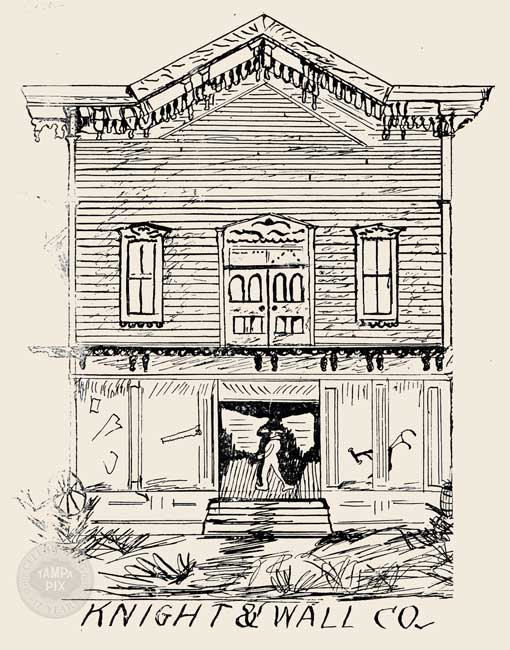
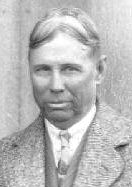
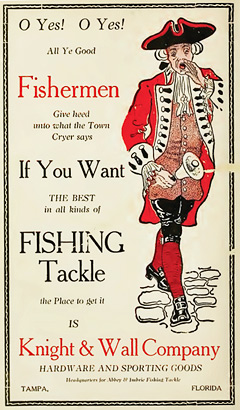
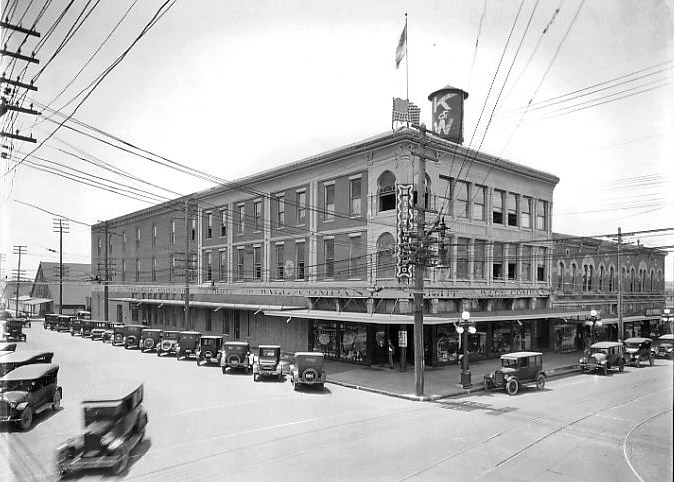
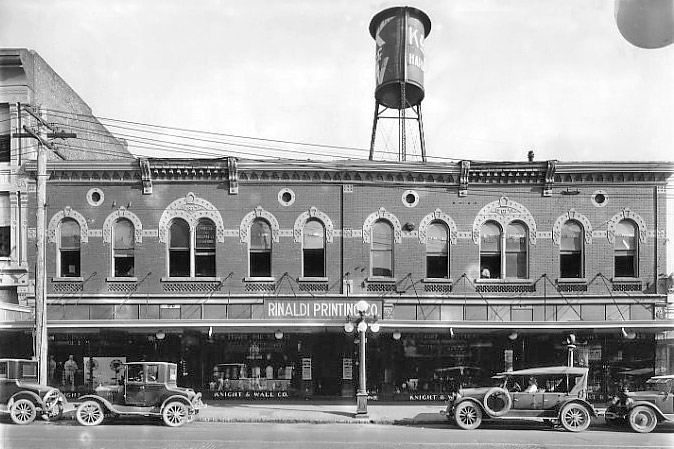
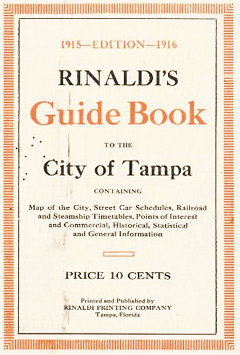
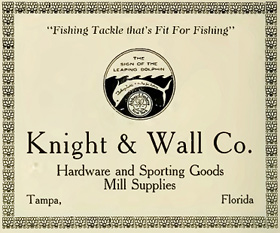
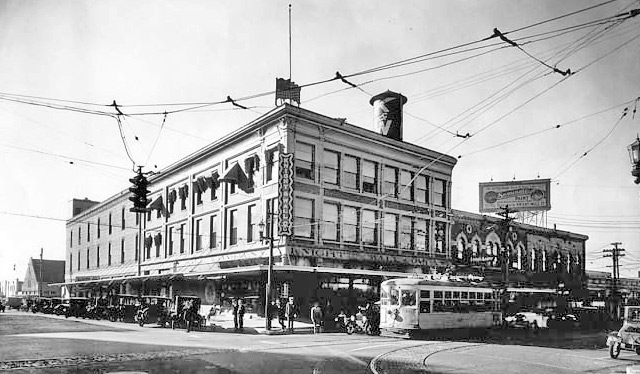
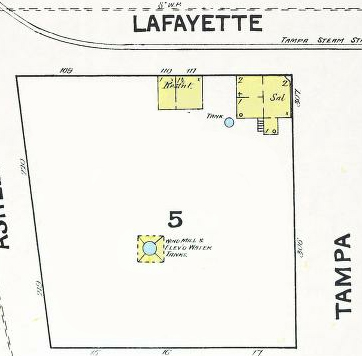
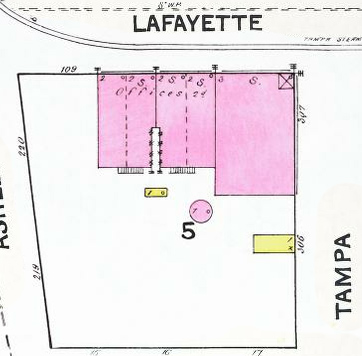
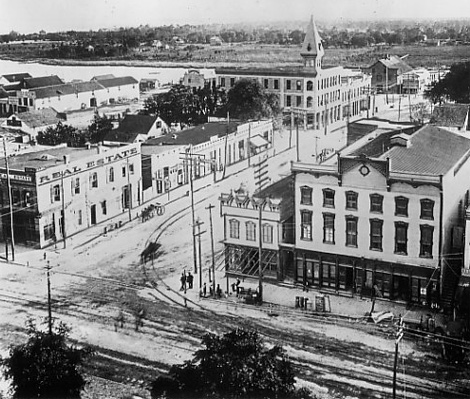
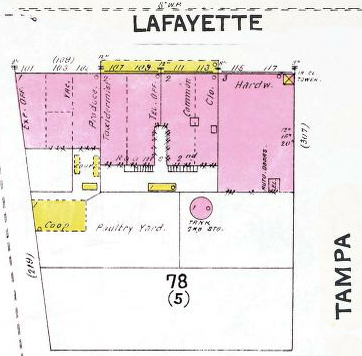
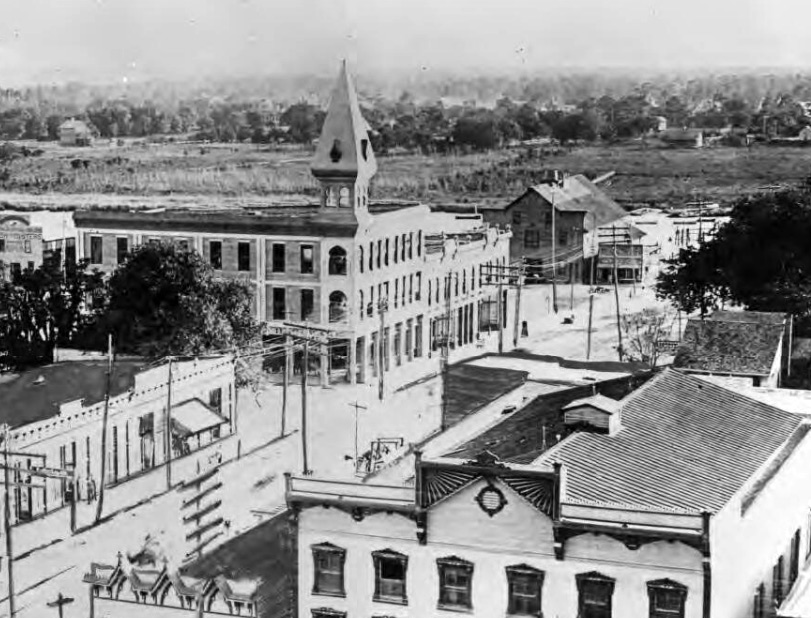
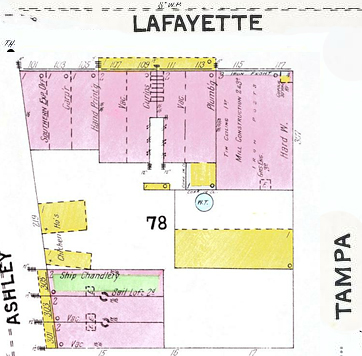
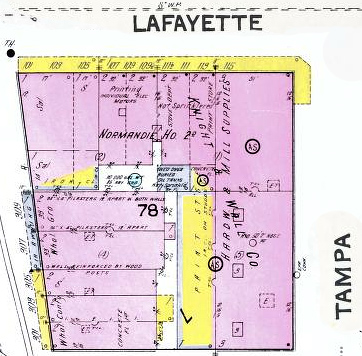
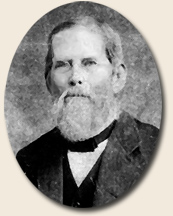
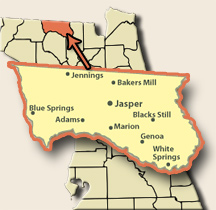 The Suttons and Whitehursts were
pioneers, migrating
southward by wagon train from Georgia into Territorial Florida during the
Second Seminole War. By 1826 they had moved on to Hamilton County, Florida,
where Susannah’s brothers John and Daniel Whitehurst also settled, and Shadrach
Sutton was appointed Sheriff in Jan. 1828.
The Suttons and Whitehursts were
pioneers, migrating
southward by wagon train from Georgia into Territorial Florida during the
Second Seminole War. By 1826 they had moved on to Hamilton County, Florida,
where Susannah’s brothers John and Daniel Whitehurst also settled, and Shadrach
Sutton was appointed Sheriff in Jan. 1828. 
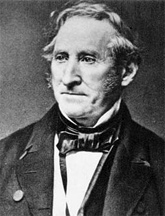
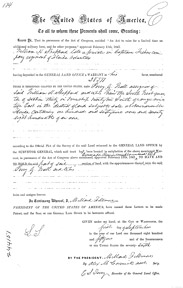
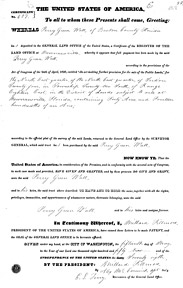
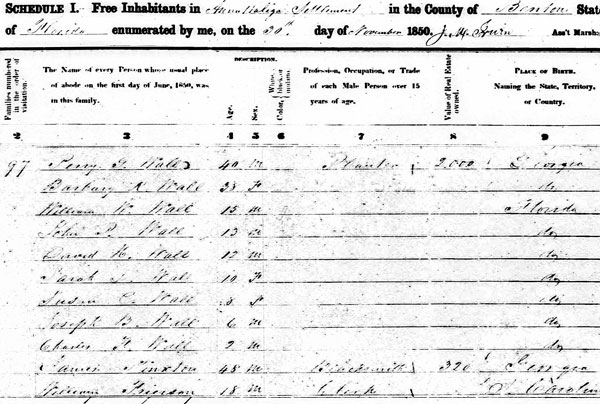
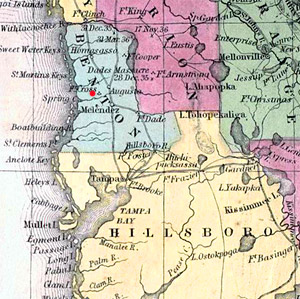
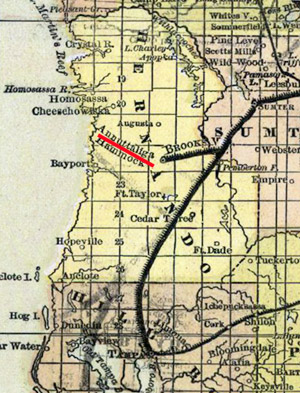
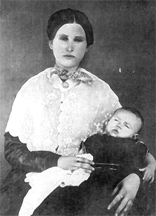
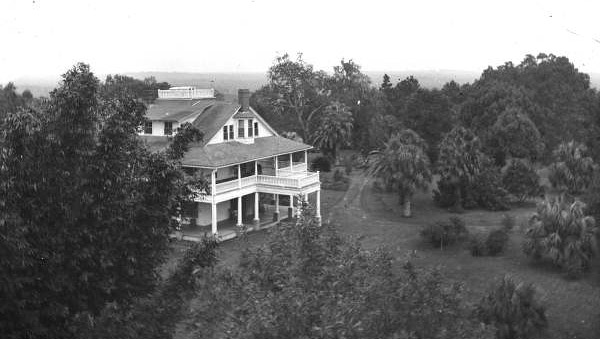
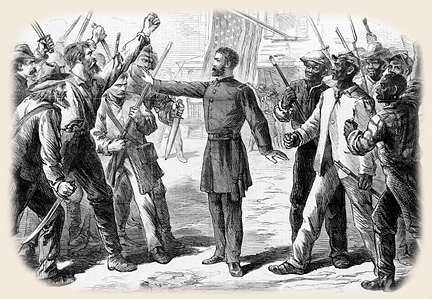
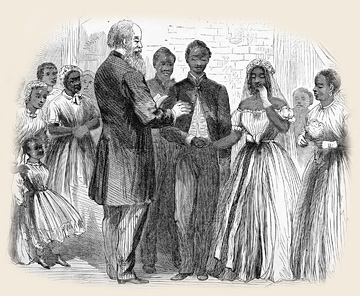
 An
interesting incident regarding Wall’s Unionism and public reaction to it
occurred in the summer of 1867. The Florida Peninsular; a staunchly Democratic
newspaper printed in Tampa,
reported that Judge Wall was in Tampa en route to Tallahassee to attend a
Union Convention there. In the next issue, the editor published an
"Apologetic" note. Noting that this report had "given offence to the
friends of the Judge in this place," the paper reminded its readers that
it had been informed that Wall had been appointed a delegate from Hernando
County and "we considered it no derogation at all, to his well-earned
character, as a high-toned Christian gentleman, and citizen of undoubted
integrity, to mention the fact." The editor went on to say that there "is
not a citizen in South Fla., we would more regret to misrepresent than
that of Judge Wall, as there are none whom we esteem more highly as a true
Christian gentleman, and of more stern integrity of life, both as a public
man and private citizen." The paper noted that if it was incorrect in its
report, the proceedings of the convention would "correct our mistake." The Peninsular’s tone seemed mildly sarcastic, yet it was not wise to offend
Judge Wall or his friends. His sons-in-law, Clarke and Friebele, were
wealthy Tampa merchants and advertised regularly in the paper.
An
interesting incident regarding Wall’s Unionism and public reaction to it
occurred in the summer of 1867. The Florida Peninsular; a staunchly Democratic
newspaper printed in Tampa,
reported that Judge Wall was in Tampa en route to Tallahassee to attend a
Union Convention there. In the next issue, the editor published an
"Apologetic" note. Noting that this report had "given offence to the
friends of the Judge in this place," the paper reminded its readers that
it had been informed that Wall had been appointed a delegate from Hernando
County and "we considered it no derogation at all, to his well-earned
character, as a high-toned Christian gentleman, and citizen of undoubted
integrity, to mention the fact." The editor went on to say that there "is
not a citizen in South Fla., we would more regret to misrepresent than
that of Judge Wall, as there are none whom we esteem more highly as a true
Christian gentleman, and of more stern integrity of life, both as a public
man and private citizen." The paper noted that if it was incorrect in its
report, the proceedings of the convention would "correct our mistake." The Peninsular’s tone seemed mildly sarcastic, yet it was not wise to offend
Judge Wall or his friends. His sons-in-law, Clarke and Friebele, were
wealthy Tampa merchants and advertised regularly in the paper.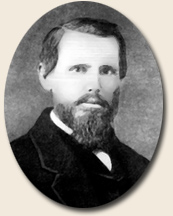
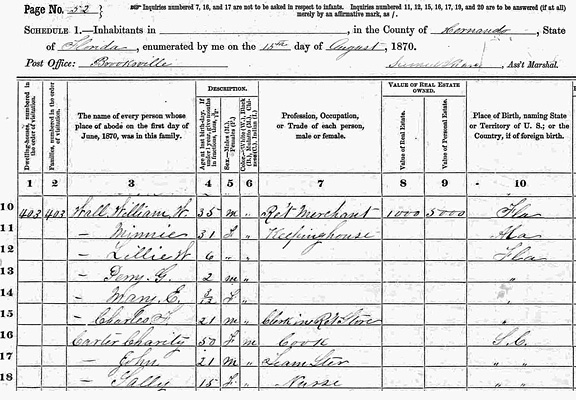 William W. Wall was
35 and living with his 31 year old wife, Minnie (Mary Ellen May) and their children:
Lillie W. (6), Perry G. (2) and Mary E. (3 mos.) This is Perry G.
Wall (II) who became the mayor of Tampa.
William W. Wall was
35 and living with his 31 year old wife, Minnie (Mary Ellen May) and their children:
Lillie W. (6), Perry G. (2) and Mary E. (3 mos.) This is Perry G.
Wall (II) who became the mayor of Tampa.